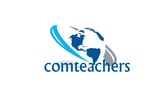|
What's a .NET Framework?
As you all understand that this .NET Framework is a common platform for programming languages such as VB, C++, C# and few more. .NET Framework is actually a VM(Virtual Machine) which is providing a platform for run applications where created using programming languages as mentioned the above. .NET Framework is also used to create a form-based, console-based, web-based and mobile-based applications or services which are available in Microsoft environment. In This Tutorial:
The .Net components:
Common Language Runtime (CLR) The CLR component is a main and one of the important components in .NET framework that works like a virtual component of the .NET Framework to executes the different languages program like F#, C#, VB, etc. A CLR also helps to convert a source code into the byte code, and this byte code is known as Common Intermediate Language (CIL) or Microsoft Intermediate Language (MSIL). After converting into a byte code, a CLR uses a Just-In-Time (JIT) compiler at run time that helps to convert a CIL or MSIL code into the machine or native code. Common Type System (CTS) CTS actually specifies a standard that represent what type of data and value can be defined and managed in computer memory at runtime. Which ensures that programming data defined in various languages should be interacted with each other to share information. For example, I define data type as int, while in VB.NET I define integer as a data type. Common Language Specification (CLS) CLS is a subset of common type system (CTS) that defines a set of rules and regulations which should be followed by every language that comes under the .NET Framework. In this case, it means; a CLS language should be cross-language integration or interoperability. As an example, in C# and VB.NET language, the C# language terminate each statement with semicolon, whereas in VB.NET it is not ending with semicolon, and when these statements execute in .NET Framework, it provides a common platform to interact and share information with each other. Base Class Library (BCL) The BCL has a rich collection of libraries features and functions that help to implement many programming languages in the .NET Framework, such as F #, C #, C ++, and more. In addition, BCL has divided into two parts as below:
Framework Class Library (FCL) FCL provides the various system functionality in the .NET Framework, that includes classes, interfaces and data types, etc. to create multiple functions and different types of application such as desktop, web, mobile application, etc. And the FCL can be defined as, it provides a base on which various applications, controls and components are built in .NET Framework. The FCL Key Components:
Microsoft .NET Assemblies: The .NET assembly is the main building block of the .NET Framework. It is a small unit of code that contains a logical compiled code in the Common Language infrastructure (CLI), which is used for deployment, security and versioning. It defines in two parts DLL-process and EXE-library assemblies. When the .NET program is compiled, it generates a metadata with Microsoft Intermediate Language, which is stored in a file called Assembly.
0 Comments
Leave a Reply. |
Archives |

 RSS Feed
RSS Feed